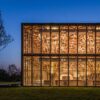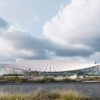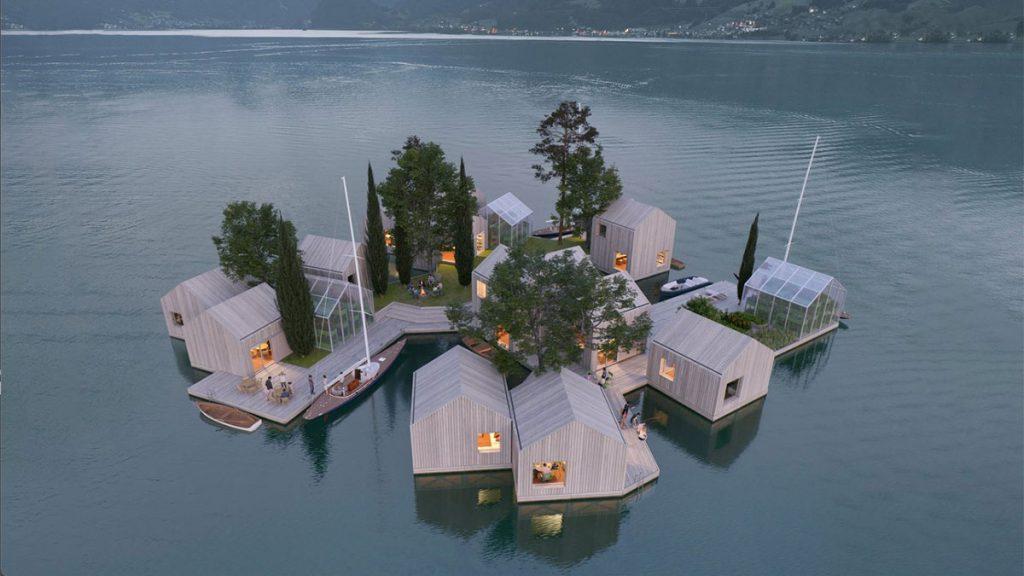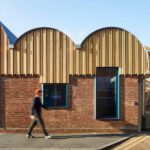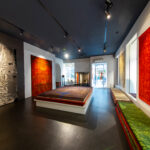Rising sea levels and sinking cities call for new solutions and ways of thinking. The Land on Water prototype was developed in an interdisciplinary cooperation. It enables sustainable, serial construction on water.
Climate change is causing the ice in the polar regions to melt ever faster. Climate researchers recently predicted a global mean sea level rise of more than one meter by 2100 if the countries of this world continue to burn as much coal, oil and gas as they do now. Due to the inertia of the climate system, levels will continue to rise for several centuries even after emissions stop. For areas close to the coast, it will be already in the coming decades: Land under.
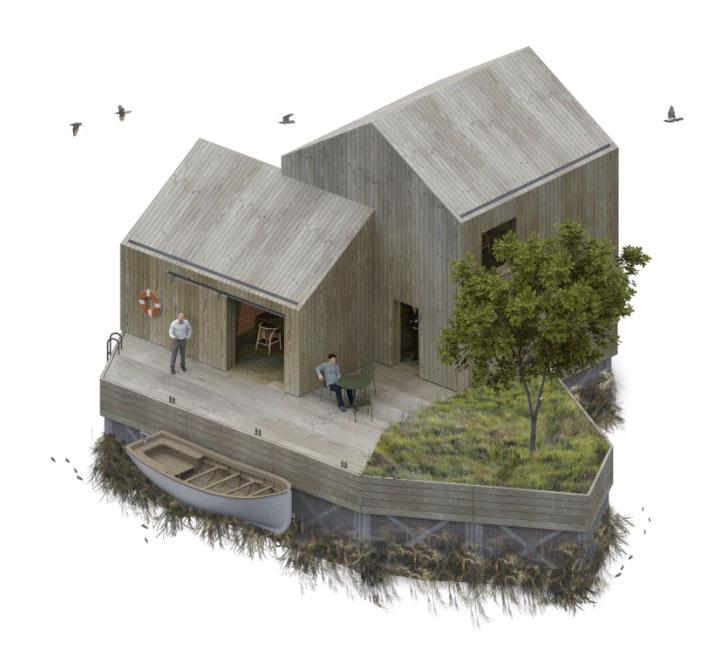
More and more urban planners around the globe are focusing on the urban development of water, beyond the vulnerable coastal regions. Copenhagen Islands, a park on floating islands off the harbor edge, is currently under construction in the Danish capital. The design is by Australian architect Marshall Blecher, who founded the Maritime Architecture Studio (MAST) in Copenhagen in 2021 together with Magnus Maarbjerg. Their specialty is building on water. Their vision: “We work with water to create open, innovative and sustainable spaces.”
Floating Cities 4.0
Now they have presented a new modular system for building on water. Land on Water is the name of the pilot project that promises a flexible and climate-resilient solution for urban waterfront development. The initiator of this idea was Austrian construction magnate and visionary Hubert Rhomberg, who together with Fragile, a concept and venture studio, had first developed a wooden solution with a rubber coating.
The system offers a sustainable and highly flexible solution to build almost anything on the water.
MAST, architectural office
“71 percent of the earth’s surface is covered by water, yet humans continue to try to claim more space on the threatened land. In times of rising sea levels, we need to rethink how and where we live,” says the managing director of Rhomberg Holding, explaining the thinking behind this.
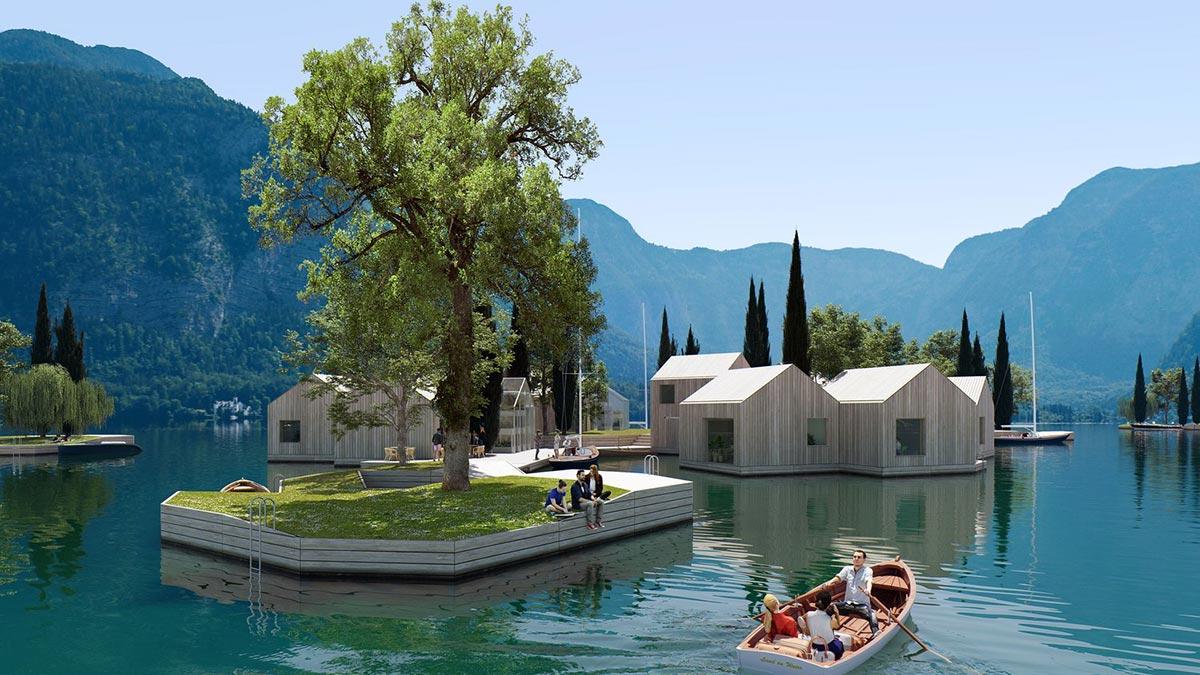
The architects professionalized the system and are now taking it to the next stage. Instead of wood, the modules are made of reinforced, recycled plastic. Their flat components can be easily transported and assembled in different configurations at any location, the architects explain. “The system offers a sustainable and highly flexible solution to build almost anything on the water – from floating houses in Seattle to campsites on the water in the Oslo Fjord.”
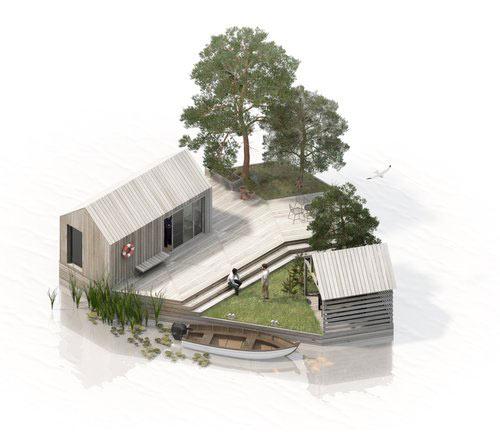
A sustainable system for rich and poor
The structures are designed to be recyclable and self-sufficient. Compared to previous systems, they would only require a minimal use of resources, explains Hubert Rhomberg. The recycled floating materials are to be sourced as locally as possible. “This means that the modules are manufactured centrally, shipped flat-packed, and filled on site with the floating materials. This makes transport more efficient, less expensive and, above all, more sustainable,” adds Lukas Kauer, co-founder of Fragile.
The highlight lies in the simplicity of the system. The basic version can be put together without much technical knowledge and with little capital, says Rhomberg. “So on the one hand, it can be used as a DIY solution in very poor areas, but on the other hand, a very high-end, luxury version of it can also be implemented.”
On the one hand, the system can be used as a DIY solution in very poor areas, and on the other hand, a very high-end, luxury version of it can be implemented.
Hubert Rhomberg, project initiator and managing director of Rhomberg Holding
In both cases, this can create local communities and social structures on the water. Just as with Rhomberg’s off-the-shelf wooden skyscraper, networking also plays an important role here. “The parts are available worldwide via a platform where know-how and best practices are also shared.”
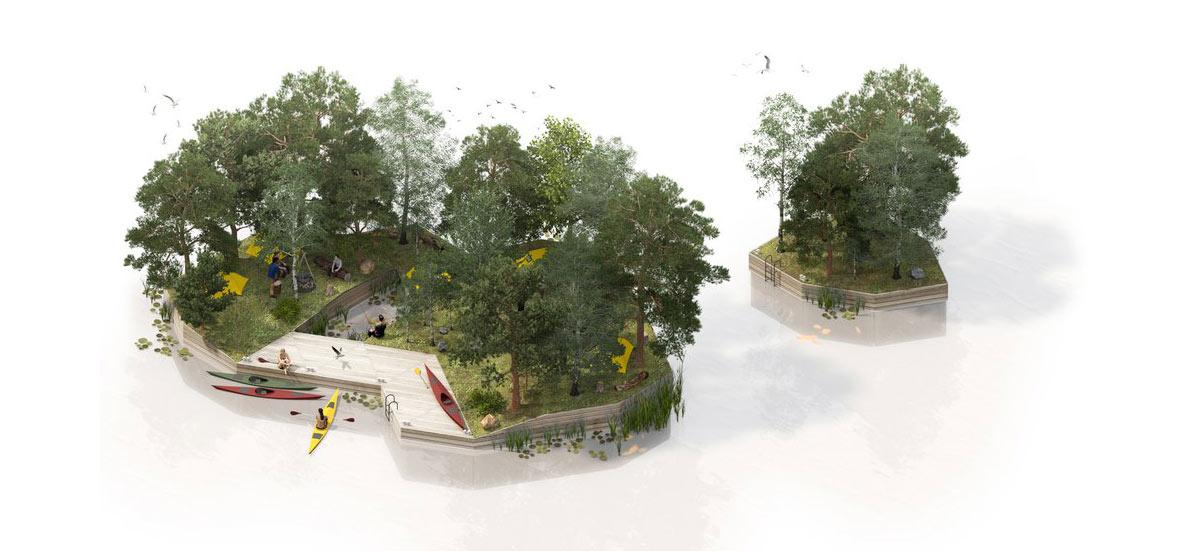
Without the mistake of the past
The floating settlements, which are self-sufficient in terms of energy, can grow and renew themselves organically – similar to the Metabolists’ thought model. They are intended to offer an alternative to currently planned large-scale projects “that repeat many mistakes made by urban planners in the mid-20th century,” MAST architects warn. “Current solutions are based on polystyrene-filled concrete foundations and plastic floats that are difficult to transport and highly polluting.”
While steel and concrete foundations are typically treated with toxic antifouling paints, Land on Water provides an ideal habitat for fish and crustaceans, as well as a docking area for mussels and seaweed.
Mast, architectural office
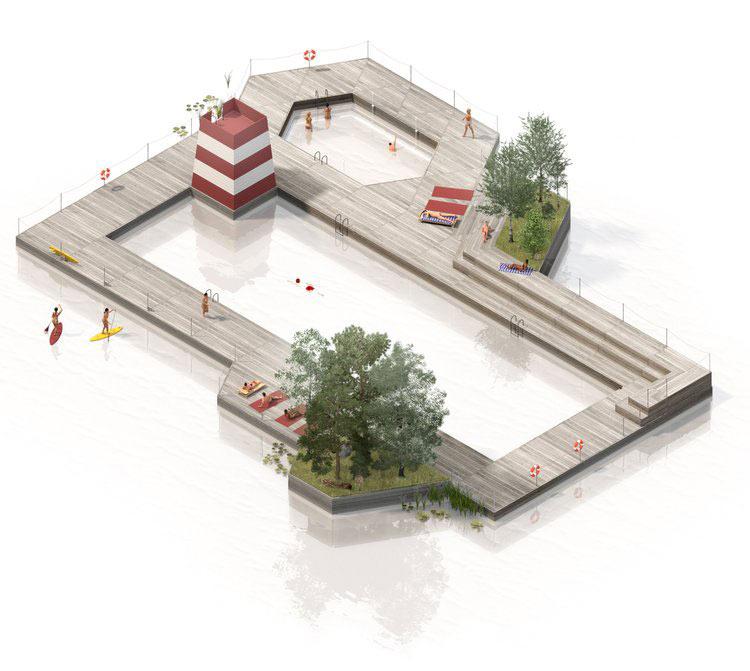
The plastic-based modular system, on the other hand, promises an underwater environment that is much more environmentally friendly than previous systems. “While steel and concrete foundations are typically treated with toxic antifouling paints, Land on water provides an ideal habitat for fish and crustaceans, as well as a docking area for mussels and seaweed.”
old system rediscoverd
The inspiration for the system came from the ancient technique of gabions. Originally, large wicker baskets were filled with stones and earth to create protective walls. While the shell eventually rotted, the rooted structure remained intact for a long time, protecting against floods and inundation.
For the modular floating elements, they simply reversed the concept. The cages are filled with upcycled buoyancy material according to the weight of the structure they have to support. In the process, the system can be flexibly adapted by adding or relocating buoyancy material to respond to any structural changes on the floating foundation.
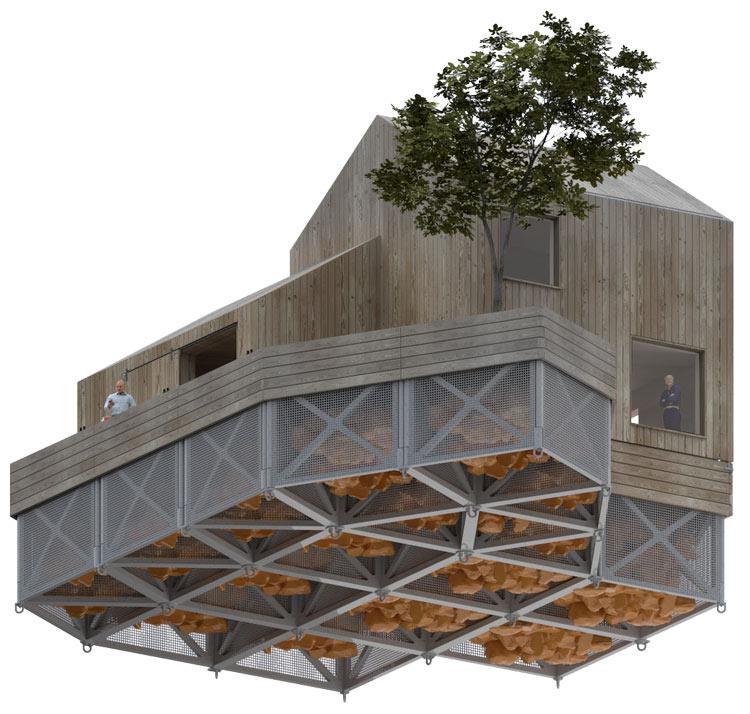
The project initiators are currently looking for partners who want to jointly develop innovative and sustainable floating projects. MAST’s architectural office in Copenhagen’s shipyard district includes its own workshop, where shipbuilders and engineers put the architects’ creative ideas into practice. Their “Dyppezone,” a portable wooden harbor pool, serves as a children’s pool for Copenhageners in summer, and in winter it anchors as a plunge pool in front of the sauna facilities on the harbor quay.
Text: Gertraud Gerst
Visualizations: Kvant-1, MAST

